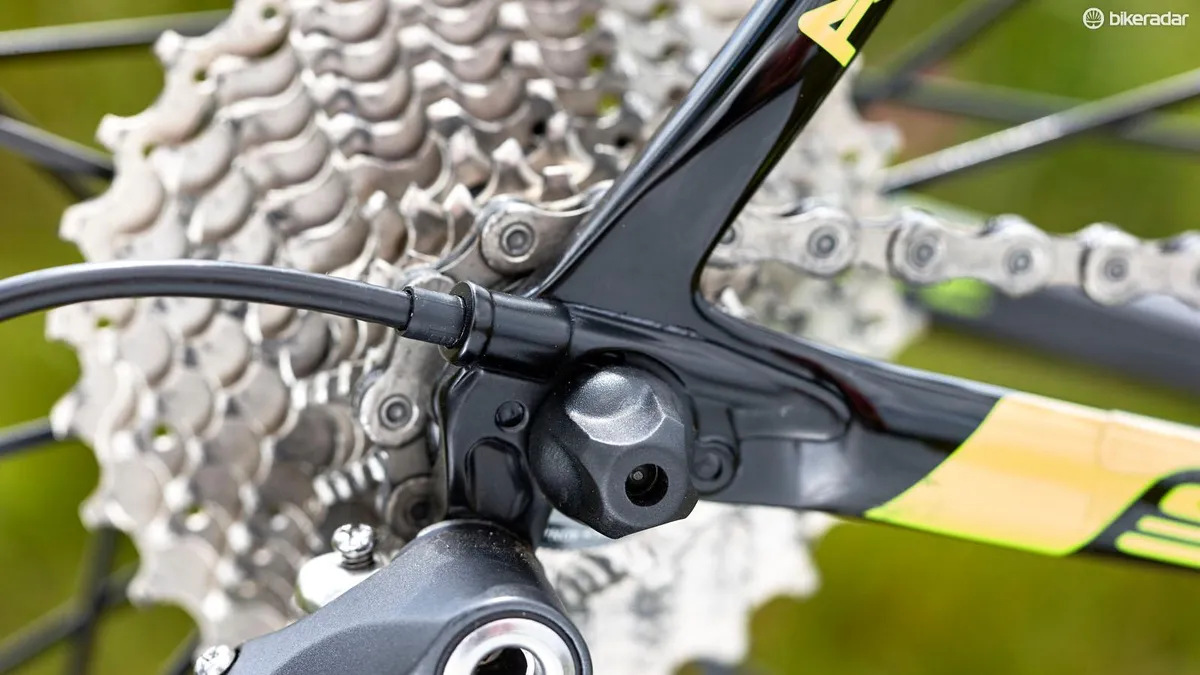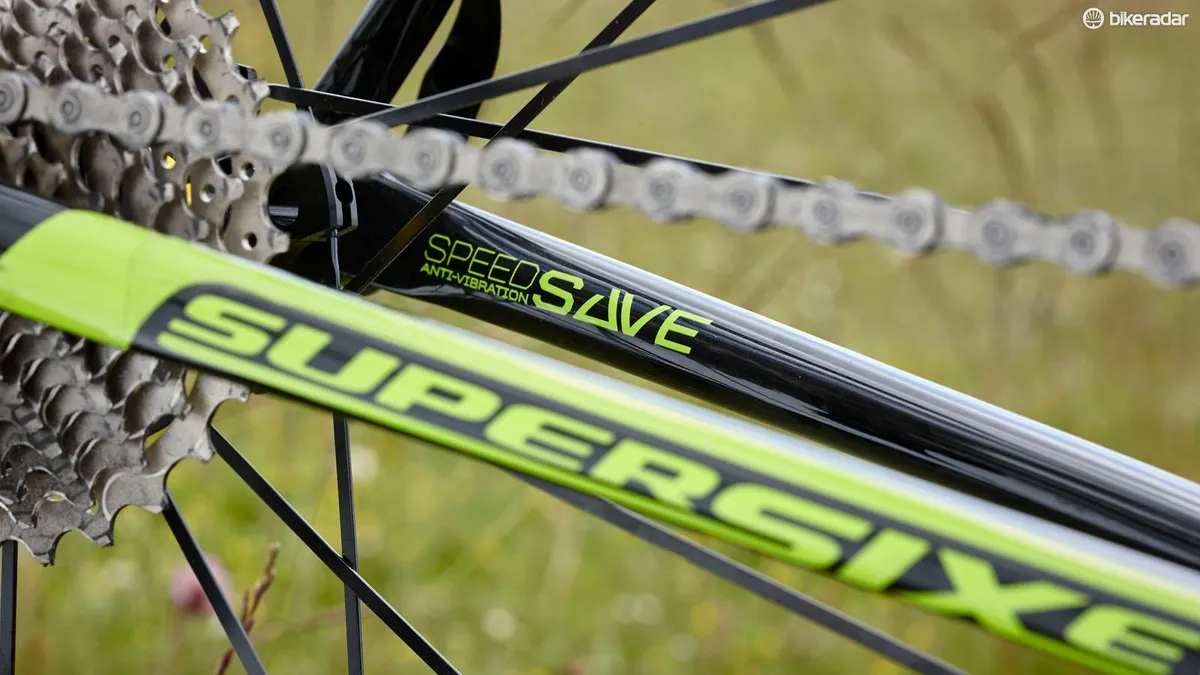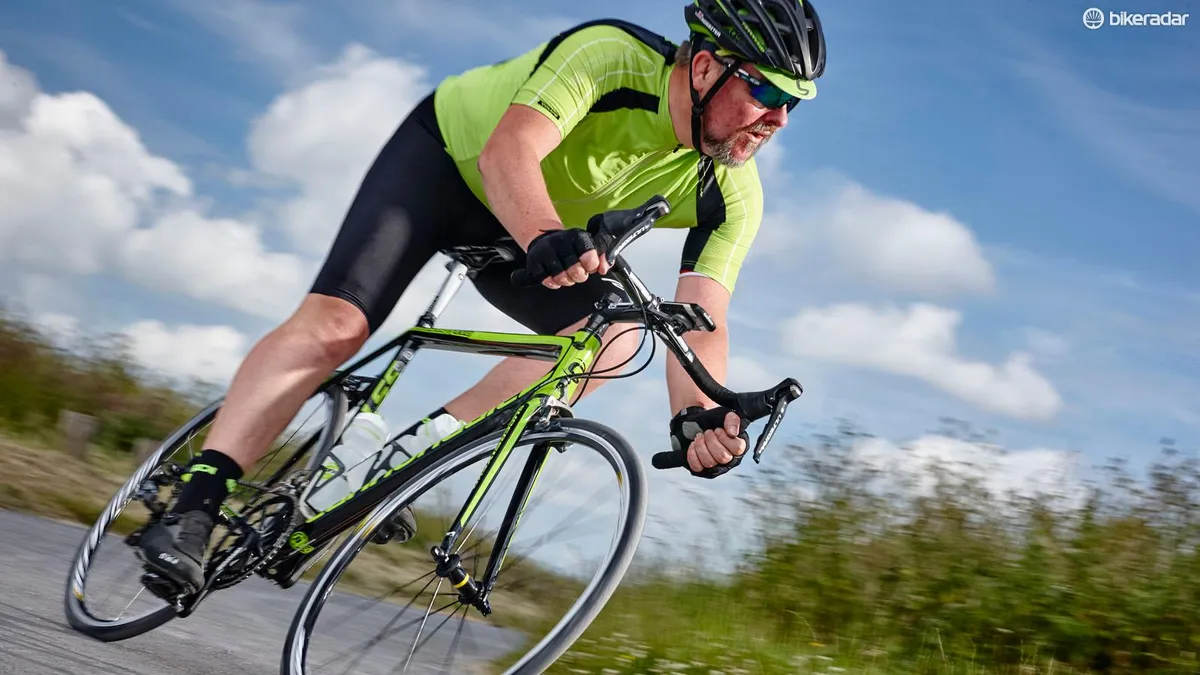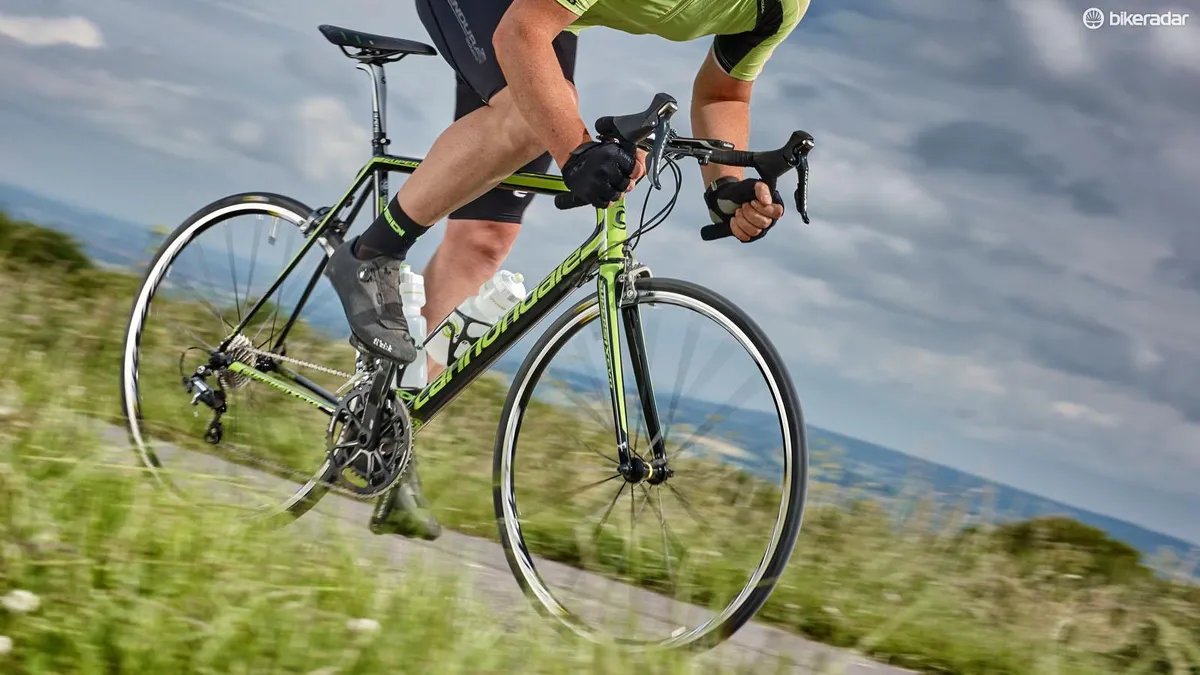At first glance you could be forgiven for thinking that Cannondale’s latest EVO is just a lick of paint and some fresh graphics ahead of its predecessors, which have been impressing us for years here at BikeRadar.
While there'd be no shame in that, the all-new EVO is in fact a ground-up redesign (or EVOlution, if you'll allow us a weak pun). So, why would Cannondale decide to do this to what remained one of the lightest chassis in professional racing circles – one with a huge list of palmares, not least of which being Sagan’s back-to-back overall green jerseys in the Tour?
- Highs: Simply stunning handling infused with compliant comfort
- Lows: Finishing kit doesn't quite hit the heights achieved by the frame
- Buy if: you want your next bike to blend a race ready ride position with superb comfort levels
Video: cannondale supersix evo hi-mod ultegra – first ride
Frame: BallisTec carbon chassis gets even lighter
Well first off, the Connecticut-based firm's engineers looked to further reduce weight. By implementing a more aggressive approach to their BallisTec carbon structure to both the frame and the fork they’ve managed to reduce the ‘system’ weight by another 70g.
With a frame that already hovered under 800g, that’s no mean feat.
Cannondale has achieved it by bringing in an all new fork design. Its slender proportions look similar to the previous fork, though it's claimed to deliver both increased lateral stiffness and a more compliant ride by using the Speed Save carbon layup design that was previously used on the chainstays.
The main frame is a little heavier at 777g (56cm) compared to 760g for the old one. But the fork is 280g as opposed to the previous 320g, the headset 66g compared with 80g (Cannondale has integrated the lower crown race into the fork rather than a separate part and the dedicated seat post is just 180g rather than 210g.
Take all these figures as a ‘whole’ chassis and compare them to the competition: Trek's Emonda SLR10 is 1312g and Specialized's S-Works Tarmac is 1718g. The new EVO, meanwhile, weighs in at just 1303g.
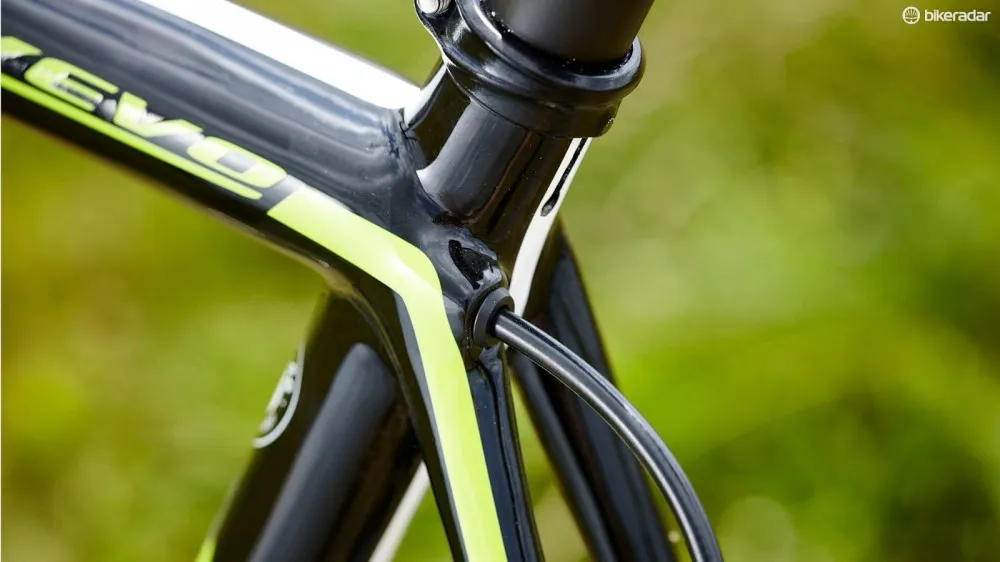
Cannondale has introduced a 25.4mm standard seatpost onto the new EVO
As alluded to above, the bike's claimed to be more compliant too – and it’s easy to see how Cannondale has managed this. Drawing from the incredibly successful Synapse (our Bike of the Year 2014), the EVO gets a similar seat tube design. It doesn’t have the whole ‘power pyramid’ from the Synapse but does have a radically slender seat tube that flares massively at the bottom bracket shell, which now houses the wider BB30A standard.
The seat tube layup is directional, which allows the frame to maintain, or rather improve rigidity through the drivetrain (not somewhere the original lacked prowess) by a claimed 8.8 percent. At the same time the seat tube has more flex, combined with both sets of stays allowing more vertical movement and topped with a Synapse-spec super skinny 25.4mm seatpost.

The new SpeedSave chainstays are shaped to allow a little give
The final claim, and perhaps the most interesting, is of improved aerodynamics. Now the EVO doesn’t exactly look like an aero bike, but for such things to be considered on an all-round race machine is a clever direction to take.
By using UCI regulation-swerving truncated aero profiles (TAP for short), Cannondale's engineers found under testing a saving of 70g of drag (or six watts over the older EVO) without any detriment to stiffness or weight.
Ride and handling: intoxicating responses and surprising comfort
We could have opted for a top-spec, all-singing-all-dancing model. But instead we’ve opted for the entry-level Hi-Mod bike equipped with Ultegra and rolling on Mavic’s Kysrium hoops.
Its what we (and plenty of you) are far more likely to buy. And of course, if a chassis is as good as its manufacturer claims then it shouldn’t matter what level of components it’s hosting.
Out on the road the new EVO feels at once familiar, though with a few significant differences. First I noticed a significant feeling of stiffness at the front end, with directional changes being met with an enthralling, intoxicating instant response – the EVO simply hits its mark every time.
When bikes are this responsive things can become a little nervous or twitchy, but with the EVO we never got to that point. It let me get to the limit – and past it – on familiar descents, helping me hit a miles-per-hour PB on our local test loop's most technical descent at the first time of asking.
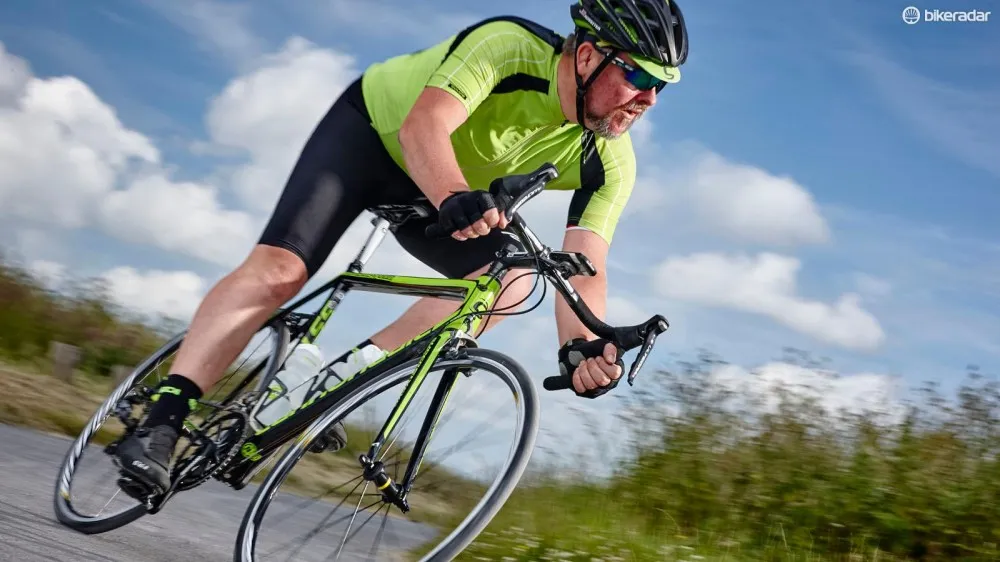
The new SuperSix's handling is, predictably, incisive and exhilarating
Improved stiffness is, though, what you’d expect of a bike that's designed to win sprints, and ascend and descend with the best of them. The bigger surprise was just how silky the ride feels – something that full-on pro-race bikes haven’t been widely celebrated for in the past.
Getting to experience the EVO on home soil was a real advantage that skirted one persistent problem with bike launches. All too often, you can be seduced by a bike on Europe’s finest roads and slick smooth tarmac – only to find that when you ride it on more familiar battle-scarred surfaces, its not quite what you thought.
The EVO, I'm pleased to report, met the challenge of poor UK surfaces and potholes with aplomb. My immediate feelings were of being on board an ideal hybrid of one of the finest endurance bikes ever (the Synapse) and a ground breaking flyweight speedster (the EVO).
We expected the back end to do the job once we'd clocked the Synapse-like seat tube and the slender 25.4mm post, but add into the equation the one-piece continuous carbon seat- and chainstays and the whole rear feels active. It's not Trek Domane-smooth, but it does a wonderful job of ironing out corrugated surfaces.
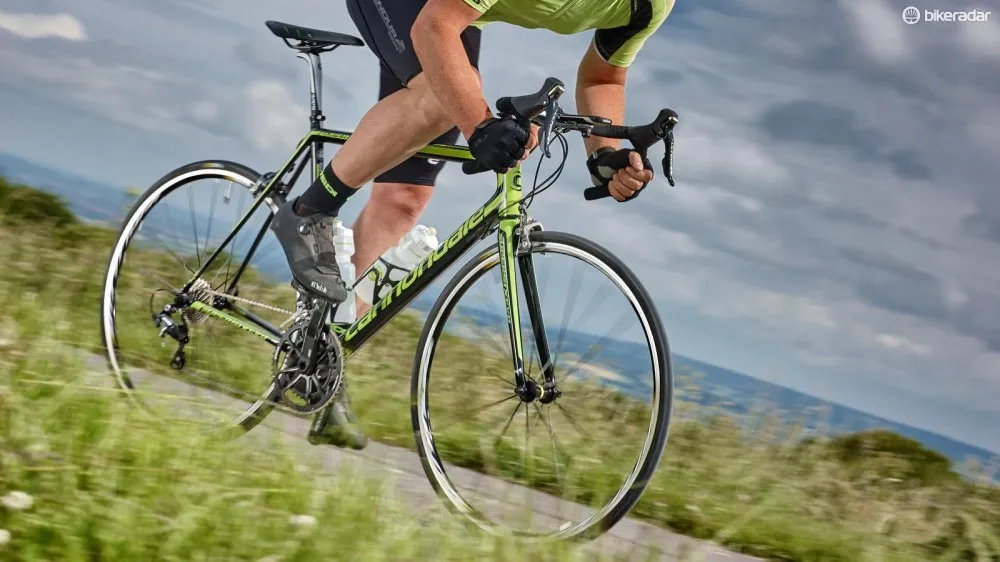
More surprising is the bike's impressive capacity for smoothing out rutted roads
My other major impression was of just how balanced the bike feels at the front and rear. The new fork feels as compliant as the back end over the rough stuff – so much so that I went hunting for increasingly terrible surfaces to beast it with.
I ended with a four-mile section of Salisbury Plain's gravel roads, usually reserved for military vehicles and ideal ground for testing ‘gravel’ or adventure bikes. On this the EVO still felt controlled and easy to handle – and bear in mind that our test bike was running Mavic Kysriums matched to 25mm Yksion rubber, but could have accommodated anything up to 28mm.
On one rocky rough descent I did manage to flat the rear. But that was at 40mph and not really the bike's fault; more the result of this overenthusiastic ham-fisted tester.
Over rolling terrain the EVO is easy to hold at a high pace. The balanced handling and smooth ride, with no significant buzz from bad surfaces, makes for a bike that’s a joy to ride far and fast – and most likely with a smile on your face.
Climbing on the EVO is as just about as enjoyable as getting through the pain can be. The pickup and response positively encourages you to get out of the saddle and go for it, with the chassis’ fly-weight and stiffness making it one of the strongest climbing machines around. Combine that with just how great it feels everywhere else, and this has to be in with a shout for being one of the best all-rounder road bikes into 2016 and beyond.
Equipment: solid rather than superb
While the Hi-Mod EVO chassis is outstanding, the equipment level of our Ultegra test bike is for the most part (perhaps unavoidably) merely decent for this level of bike.
The base model Kysrium hoops are solid performers, stiff, responsive and hardy. The Yksion 25c tyres meanwhile show Mavic’s continuing improvement in the world of rubber – they grip well in the dry but are noticeably slimmer than other 25mm models we’ve tried. We’d like to have seen Cannondale reach another rung up the Kysrium ladder.
Likewise, this bike deserves a carbon bar, though we can’t find much fault with the C1 alloy model aside from the grams gained – it's nicely shaped with a good compact drop. The slender carbon seatpost and Fizik Arione saddle, meanwhile, are classy additions.

The new Si chainset features an all-new eight-arm one-piece Spider ring
The new iteration of the second tier Si crank has been lightened and improved by a new mid-range Spider ring. On the top SiSL model it’s the machined masterpiece 10-arm one-piece version; here it’s a new eight-arm spider.
It’s not that important, but the Spider ring certainly looks a whole lot classier than the previous EVO's off the shelf FSA rings and bolt-on spider. More crucially, the tooth profiles work well with the ever-dependable Ultegra groupset, meaning slick shifts up and down are the order of the day.
Verdict: great road bike DNA produces a worthy next generation
In all we’ve been massively impressed with the refreshed EVO. It’s managed to retain the DNA of the previous generation while adding better comfort and improved stiffness, especially through the head tube.
That’s in turn has improved the handling and responsiveness – so if you're looking for a bike with proper racing geometry infused with the comfort of a true endurance machine, then the new EVO in whatever spec (or price) you choose should be very high on your upgrade list.




